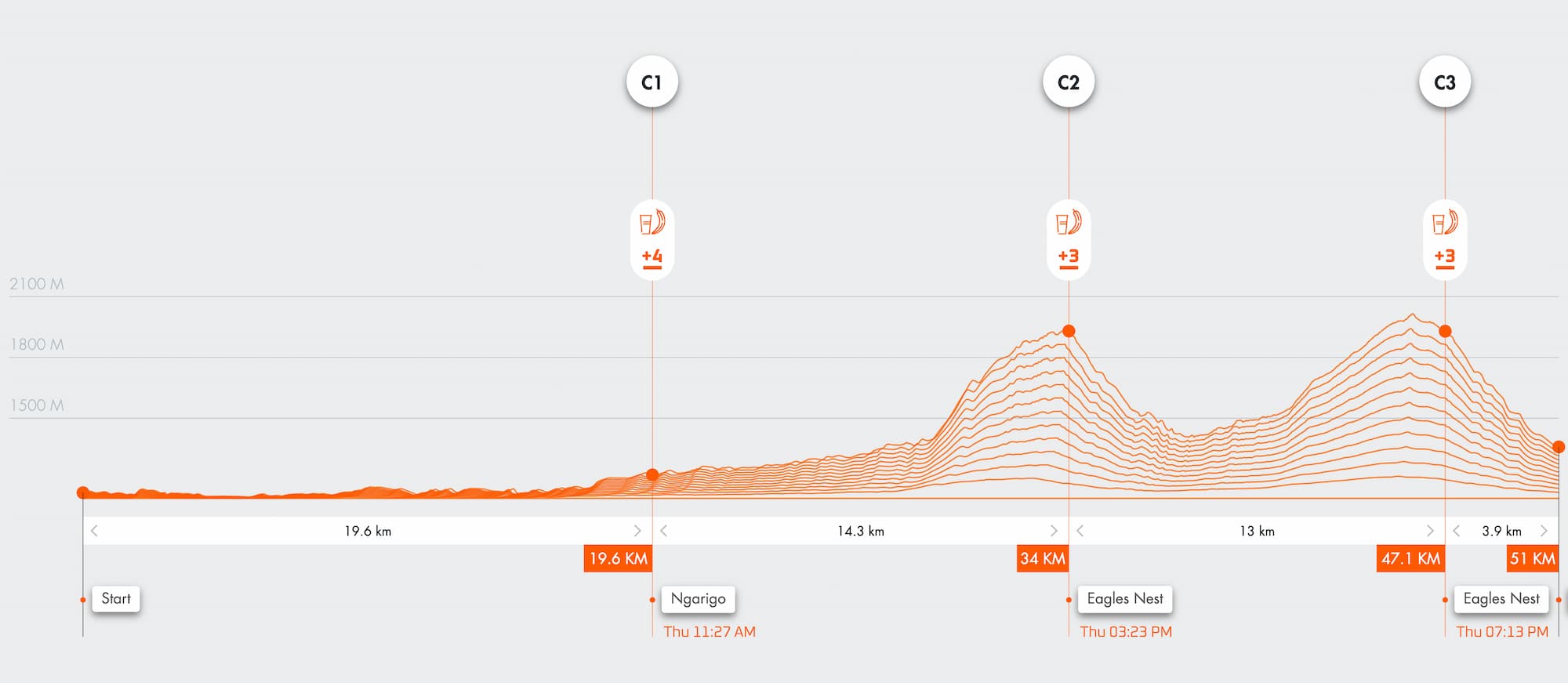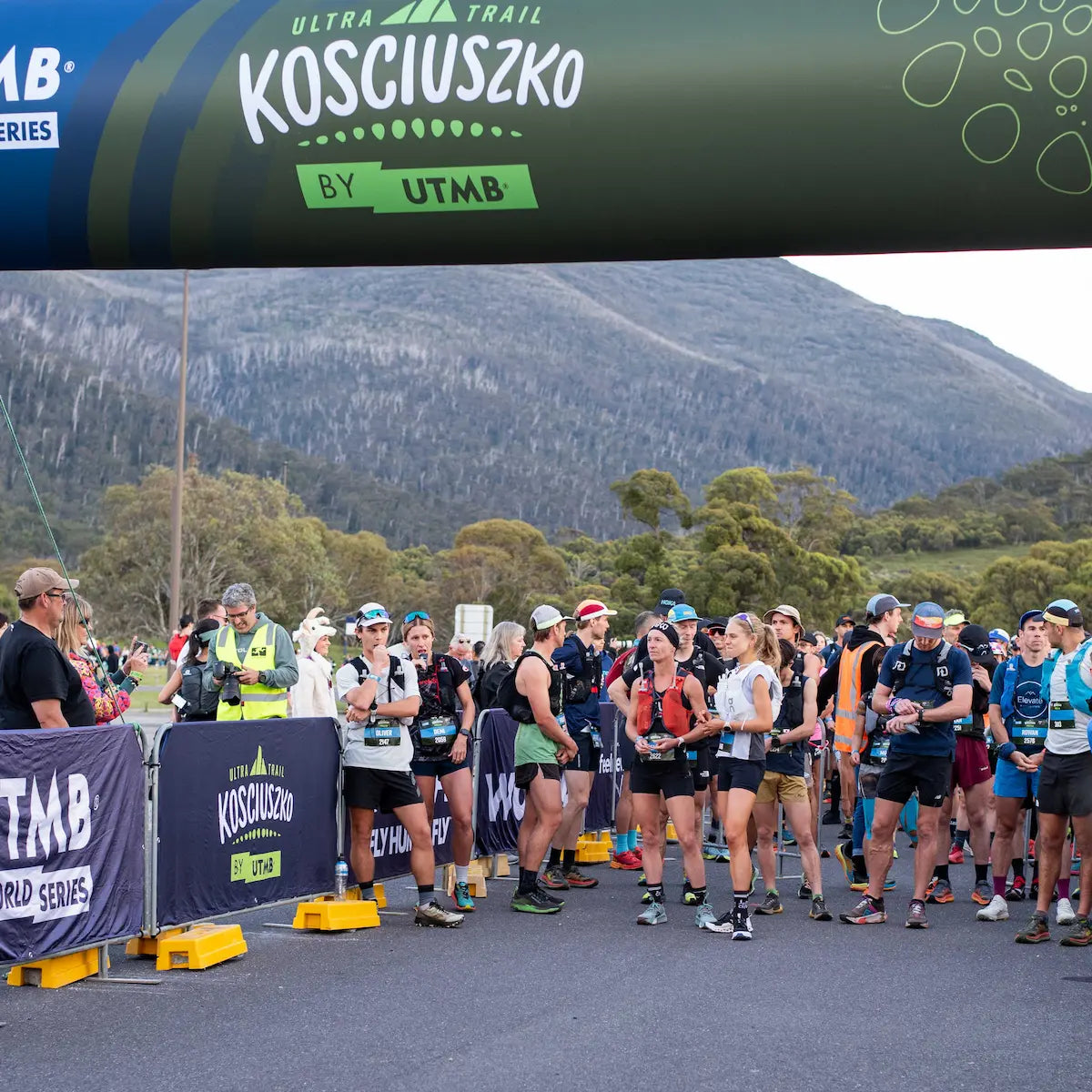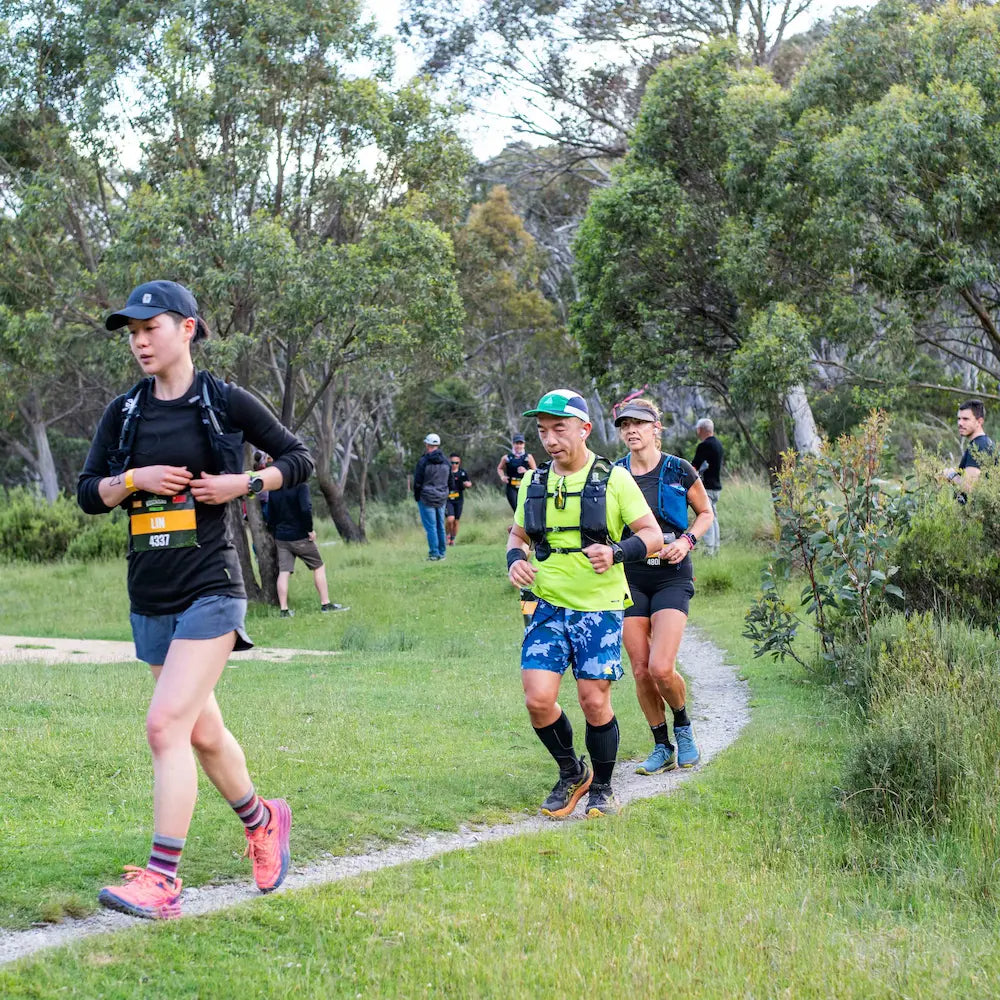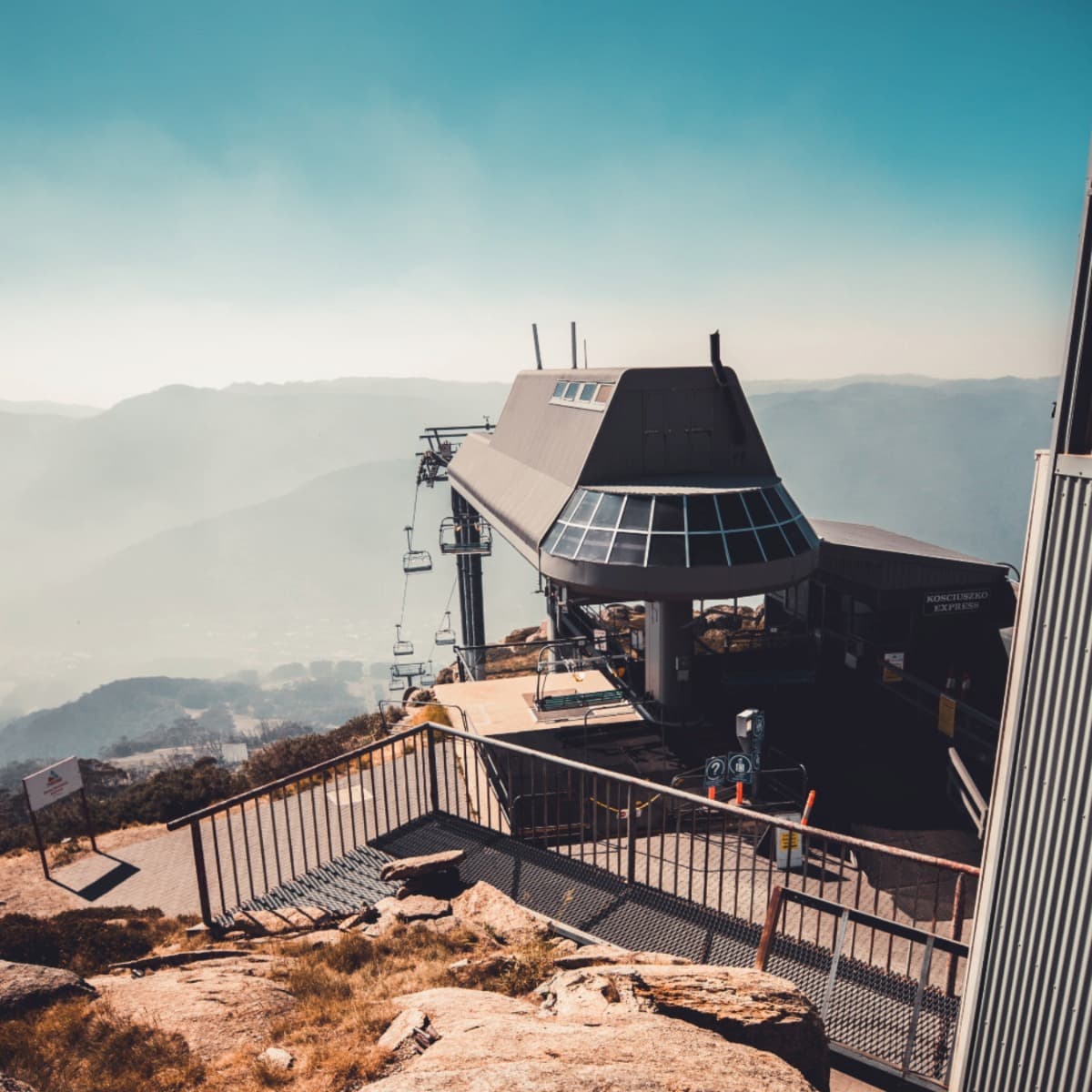Ultra Trail Kosciuszko 50K: What To Expect
Nestled in the picturesque Snowy Mountains of Australia, the Ultra Trail Kosciuszko presents a formidable challenge for trail runners.
With options ranging from 27km to an epic 100 miles, it's a race that tests endurance, skill, and mental fortitude. Our focus here is on the 50km course, a popular choice for its rigorous yet achievable distance.

Course Map
50k Course Overview
The 50km course of the Ultra Trail Kosciuszko is scenic and enjoyable to run.
Runners traverse through varied landscapes, encountering two larger steep climbs coupled with rapid descents, and winding trails. When looking at the 2023 course, you can see that the elevation profile is fairly flat for the first 20+ kilometres.
The race begins with a 1km road stretch, allowing runners to find their rhythm and position in the pack. The initial 20km, though seemingly flat on the map, is replete with turns and undulations, demanding focus and energy conservation. This section, mostly single trail, may also involve overtaking some of the slower 27km runners. The first 10km are around the starting area, and then the course takes you along the Thredbo River towards Thredbo town.
From 29km to 33km, the course presents its first major challenge: a steep ascent up a ski slope, arriving at the ski lifts and aid station at Eagles Nest. This segment requires a fast hike, with poles being particularly useful. The descent from Eagles Nest is equally demanding, with steep, technical trails that test your agility and concentration.

Getting to the start line
The start line is about a 15-min drive from either Jindabyne or Thredbo. There is plenty of parking. The race started at 6:30am. By that stage, there was plenty of light and no need for a head torch. The 27km runners start before the 50km group, in self-seeded waves.
The 50km run attracts the largest number of runners in the event. The start is also self-seeded – you choose what starting wave you wish to run in, based on your expected finishing time.
Aid Stations and Hydration
One of the critical aspects of this race is the strategic placement of aid stations. With the first station at 19km,the next at 34km, and the last at 47km, runners must plan their hydration. The distance between these points, especially on warmer days, makes carrying sufficient water and electrolytes an important consideration.
The aid stations are generally well-equipped with fruit, soft drink, lollies, gels, water and electrolytes. However, as with most events, the electrolytes are diluted more than usual. If you’ve been training with specific products (especially gels) it’s always good to stick with them during the event.
Fresh fruit (bananas!) and other real food options, are great to pick up at aid stations. Packets of Energy Nut Butter are lightweight and easy to carry with you too.
There are no cups at the aid stations, so it’s best to have a reusable cup or soft hydration flasks with you for easy filling. We find that flasks are easier to fill up than a hydration bladder, and you can carry a mix of water and electrolyte with you. Another option if you want plenty of fluids is to have your hydration bladder, and then carry one or two smaller soft flasks, that you can fill with electrolytes at the stations - like our 500mL soft flasks.

Spectator and Support Crew Points
Spectators and support crew can see you at the 19km mark, at Ngarigo. This is a campsite area, with a relatively small parking area. Your supporters aren’t allowed in the aid station area, and they are not allowed to give you any assistance (apart from encouraging words!)
The next opportunity for spectators to see runners is alongside the course near Friday Flat. This is close to the finish line of the race, where they will also be able to cheer you on as you cross the finish line.
Equipment Recommendations
For the 50km course, standard trail running shoes suffice, given the well-maintained trails. However, considering the steep climbs and descents, trekking poles can be valuable, mainly for the steep climb up to Eagles Nest. That said, the rest of the course is runnable, so it’s a bit of a trade-off for carrying extra gear or having the poles on that section.
The mandatory gear list will change depending on the weather forecast. The weather is changeable – in 2022 runners encountered snow on the 100km course, in 2023 the 50km event had some wind but no rain. A high SPF sunscreen is a must!

Weather
The mountainous terrain means weather conditions can change rapidly. In 2023, the 100km and 100-mile runners faced significant rain, while the 2022 event saw snow.
Be prepared for this, especially high winds at higher elevations, is crucial. If you’re running the 100k or milers especially, have a buff or beanie that’s easy to access. This will provide necessary protection for your ears if there are strong winds. We climbed Mt Kosciuszko the day of the 100k and 100 mile race, and the wind was howling - it was painful for ears if they weren't covered!
About half the 50k course is exposed (i.e. not under tree cover). This means you will not be sheltered from the rain or sun.
Getting to Kosciuszko National Park from Melbourne
We trusted Google Maps to navigate us to Jindabyne from Melbourne. Google Maps offers two routes, one through Warragul and Snowy River National Park. This is the shortest route distance-wise, but what Google does not tell you is that it contains 110km of unsealed road!
We do not recommend taking this route, especially if you don’t have a 4WD. Your best bet is to go via Albury. The drive is long (budget for 9+ hours with stops); however, it is beautiful, especially when you reach Kosciuszko National Park. The roads are sealed, but be prepared for windy roads and tight turns.
